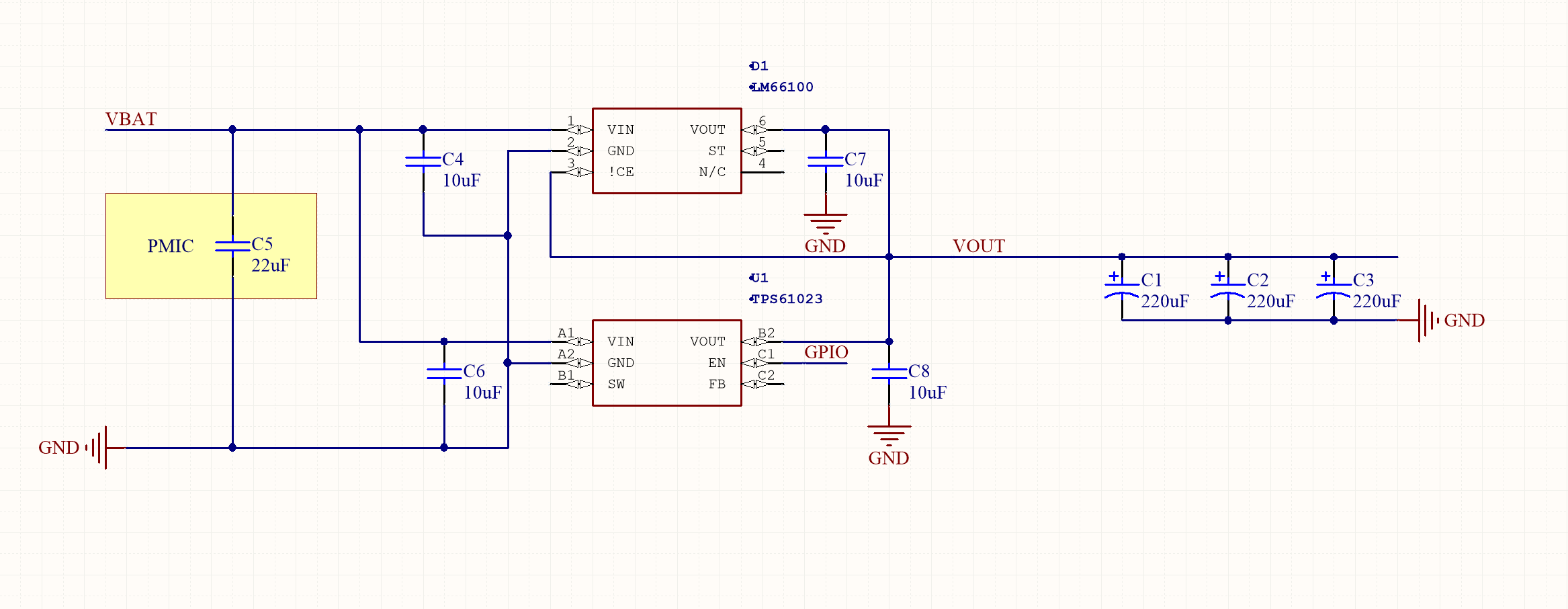Other Parts Discussed in Thread: TPS61021A, LM66100, TPS61022
Dear TI-Team,
we're looking into a powermuxing application where Ibat <= 200mA, 1.8V < Vbat > 4.2V. Load current is mostly < 200mA but in short peaks can reach 2A (GPRS modem). TPS61023 seems like a reasonable fit, but I wonder about the Vout leakage current. If en is low for the chip, and VIN = VOUT, is the typical current into VOUT still 20uA? The datasheet only states the Iq into VOUT with IC enabled but not with IC disabled.
Here's a simple schematic (FB/SW omitted)
TPS61021A is not an option because of the lower output capacitance range.
Suggestions for alternate parts are welcome, but please no BGA and pitch >= 0.5mm


